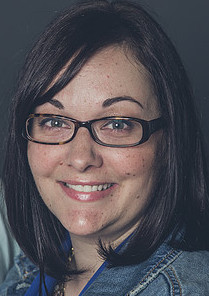Being a “newish” administrator in an elementary school is a continually daunting task. You are attempting to learn the role of an educational leader, while at the same time managing the administrative tasks that go along with the role. It really becomes a precarious balancing act which many new administrators can struggle with.
Being an educational leader—someone who evokes positive change—could easily be identified as the main reason that many of us enter the administrative profession. We want to inspire and guide practice. We want to ensure that the best and most effective teaching pedagogies are practiced and celebrated. We want our students to be the best versions of themselves. And we want that vision for our teachers too. We desperately strive to towards this goal. And truly, at times, we feel the sting of failure when we haven’t met this goal. The bounce leaves our step for a time, and we momentarily forget why we chose this avenue in education. We long for the weekend, curse the loads of paperwork and to-do list items, and wonder why we thought we could change the world. Yes, I agree, lofty goals, but the passion that administrators have for the profession, makes us feel this way when we feel that we are not inspiring and motivating our staff to grow and evolve as learners themselves.
With this in mind, I was feeling the Monday morning drain, the feeling that all educators, teachers and administrators alike, have experiences at some time. Into my office walks one of my seasoned intermediate teachers. This teacher is one whom I love working with. She is open to trying new things, keeps a sense of humour front and centre, and is honest and forthright with her thoughts. And in she walks, telling me that she is feeling completely uninspired and bored with her French instruction. Time to fake it, I thought to myself! Muster up the energy, Courtney! Remember that you love leading! Pep talking myself as much as I could, I asked her to sit down and tell me about her struggles.

As she talked, I felt that spark inside me, that flame that burns for learning and leading, flicker, and slowly catch. she asked: “How do I make Core French interesting?” “How do I enjoy it more myself?” “I don’t want to hand out worksheets and listen to recordings on how to pronounce words, so what do I do?”
AND THE FLAME CAUGHT. AND GREW. AND GREW.
I realized then and there that this is why I lead. For those moments when a teacher seeks ME out. Not me trying to convince a teacher that I will come and support in their class any time they want. Not me trying to convince a teacher that I would be a great co-teacher or planner. The teacher came to ME. And then I realized that I had in fact, this whole time, been growing and learning in my leadership. This teacher coming to me and asking for support, not wanting for a new piece of technology or resource, but for instructional guidance and support, was what I had been working towards since I began this new role. And here it was! And so I started with this… “We need to find the STORY of the subject. Not just a story. But the hopes and fears of the people behind it. The blood, sweat, and tears, of the hiSTORY. Let’s research and learn together.” (Read more about the power of story here.)
AND SO IT BEGAN.
This simple ask for support was something I desperately needed that day! It gave me the opportunity to engage with a teacher in an authentic and symbiotic way. The teacher and I brainstormed about exploring French culture, and we began to think about the different avenues with which to teach it. French monuments became the topic of discussion and of course, the Eiffel tower. I used this opportunity to unpack the most powerful tool we have at our disposal, the element of STORY. What is the story of the Eiffel tower? And so the teacher and I began reading and learning. Did you know that the Eiffel tower was actually built to celebrate the 100th anniversary of the French Revolution? And that many Parisian artists thought it gaudy and an eyesore? This was how we started…
We know that Imaginative Education tells us to “act the reporter” and find the story behind the topic. Find what is emotionally compelling about it, or what makes us feel. The story of the Eiffel tower is rooted in heroic qualities, extremes and limits, and binary opposites. These cognitive tools allow us to tap into the learning skill sets of Romantic Understanding learners. Kieran Egan, founder of the Imaginative Education approach, describes the learner with a “romantic” understanding, or take, on the world, to the child that has mastered reading, and is now building their sense of the world, and their place in it.
The teacher and I have planned to meet and further unpack the story of the Eiffel Tower and other French monuments. My hope is that we can start with the stories of different French symbols and connect them to the cognitive tools of the romantic understanding. Thinking of those cognitive tools…
How can we use extremes and limits to learn about the Eiffel tower and find the most expensive piece of artwork in the Louvre?
What is the narrative behind the artwork found in the Louvre?
What could be the heroic quality of the baguette, or French cuisine?
Could students employ the change of context cognitive tool and debate the differing opinions of the Eiffel tower?
How might students create a collection of breads from around the world, when learning about the croissant?
Could learning about Versailles tap into the cognitive tool of extremes and limits of reality? How can we use the cognitive tool of humanizing meaning by researching the root words of common French terms?
Could students build the narrative structure of the creation of the Louvre and its hidden secrets?
How could students learn about revolt and idealism through the reign of Marie Antoinette?
Ultimately what we want to engage our students with, is their sense of wonder! In everything, from a sweet bread to a flat hat, we have to find a way to engage their emotions and wonder.
Sometimes administrators feel lost as well. We feel uninspired, and not sure if we are making a difference. So I IMPLORE you, teachers and administrators alike, reach out to each other. We all have a common goal. Furthering the teaching practice in our classrooms and buildings is why we keep teaching. We are a TEAM. We are a GROUP. We are in this TOGETHER. And sometimes we need each other more than we realize. Let that be OUR story.
By Courtney Robertson
(*Image courtesy of Daniel Sicolo Photography)
Courtney Robertson is a Vice-Principal in Langley, British Columbia. She completed her Graduate studies in Curriculum and Theory with a focus on Imaginative Education at Simon Fraser University. Courtney began her career as an Early Learning Specialist and has continued to find passion and enjoyment in teaching and working with young learners. Her primary research areas include dialogical thinking and multiculturalism, the power of a beautiful narrative, and the “wonder” of teaching and learning for all students. You can follow her on Twitter at @wonderanded
**All images retrieved from pexels.com**




